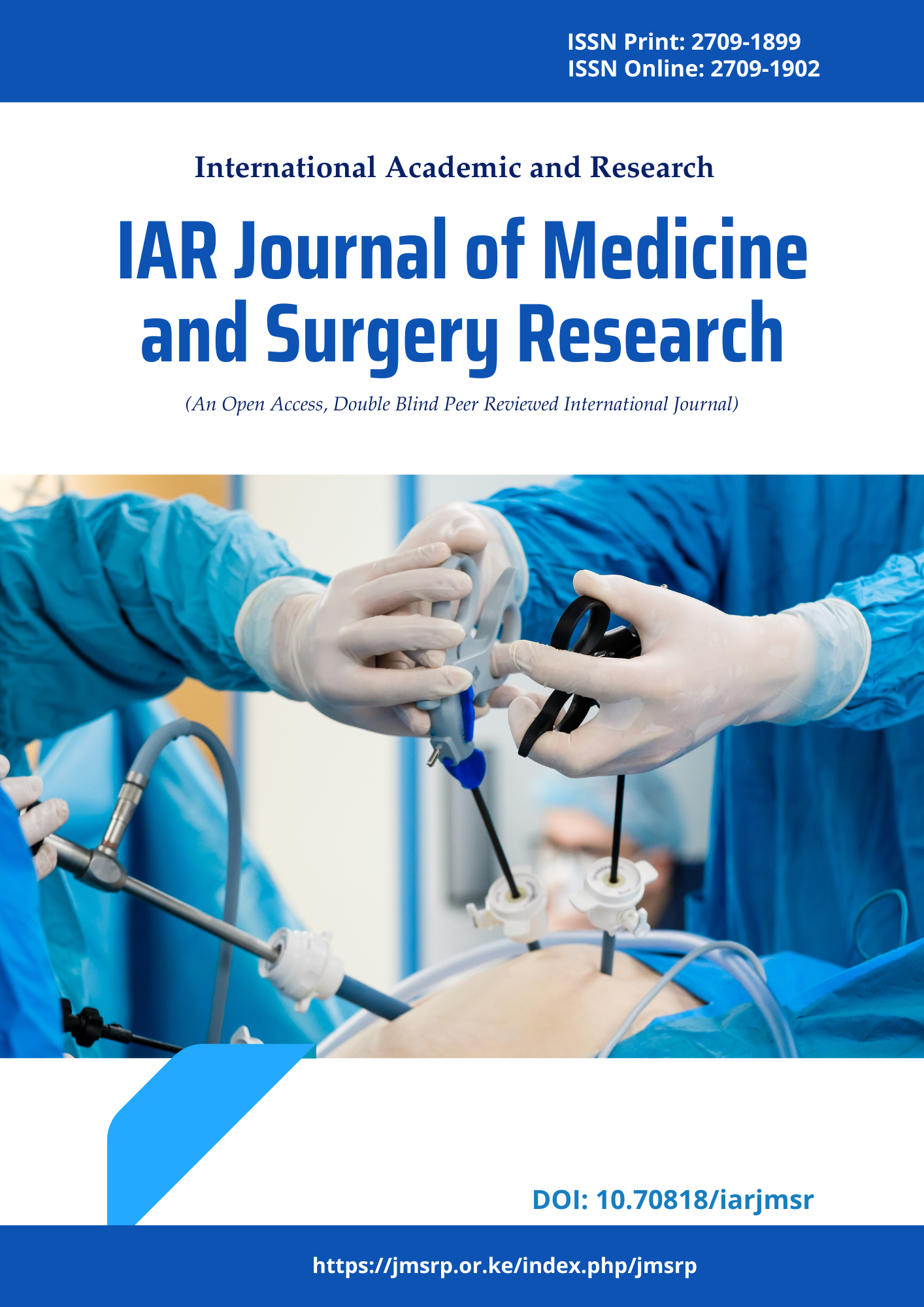A Comparison of General anesthesia and segmental thoracic SpinalAnesthesia regarding hemodynamic and respiratory stability forlaparoscopic cholecystectomy
DOI:
https://doi.org/10.47310/iarjmsr.2022.V03i06.01Keywords:
General Anesthesia, Laparoscopic Cholecystectomy, Segmental Thoracic Spinal AnesthesiaAbstract
Background: Laparoscopic Cholecystectomy (LC) is conventionally performed under general anaesthesia (GA), but multiple studies have found spinal anaesthesia (SA) as a safe alternative. GA may be associated with postoperative pain and nausea and vomiting (PONV) and the use of neuraxial techniques for a variety of surgical procedures resulted in a decrease in mortality, venous thromboembolism, myocardial infarction, and several other complications. Spinal anesthesia (SA) is a commonly used anaesthesia technique that has a very good safety profile. Methods: This is a prospective study conducted in the Department of Anesthesia at Goa Medical College, Goa from June 2021 to May 2022. Ninety patients classified according to the American Society of Anesthesiology (ASA) as class I or II undergoing laparoscopic cholecystectomy, divided into two groups, 45 patients each. Written informed consent was taken from each patient before the study. Group A received conventional general anesthesia with endotracheal intubation and mechanical ventilation, and Group B received a segmental T10- T11 interspace thoracic spinal anesthesia using 1 ml of plain bupivacaine 0.5% (5 mg) in addition to 25 mcg fentanyl. In group B, drugs to manage patient anxiety or hemodynamic perturbations (bradycardia or hypotension) were given when needed. Result: Group B, receiving segmental thoracic spinal anesthesia, was more hemodynamically stable as compared to Group A. All three hemodynamic parameters pulse rate, systolic blood pressure, and diastolic blood pressure were elevated throughout the procedure in the GA group. Bradycardia was seen in 2 and hypotension in 5 cases in the Group B group. The surgeons did not find any significant difference in the operating conditions or muscle relaxation between the two groups. Patients in both groups maintained above 97-98% SPO2. Conclusion: Segmental Thoracic Spinal anesthesia is adequate and safe for laparoscopic cholecystectomy in otherwise healthy patients and offers better postoperative pain control than general anesthesia without limiting the recovery
















